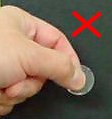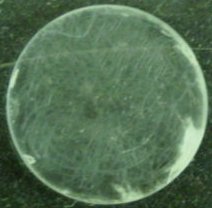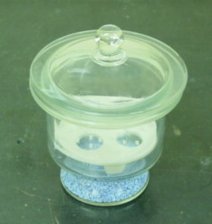|
Sample Preparation A variety of techniques exist for the preparation of IR samples. Liquids are conveniently recorded as thin films pressed between two salt plates (generally made of KCl which is transparent to IR radiation). Compounds that are soluble in organic solvents may be recorded in solution (i.e., the compound is dissolved in the organic solvent and the solution is placed in the path of the IR beam). Because the solvent will also absorb IR radiation in certain regions of the spectrum, it is important to select a solvent that does not absorb strongly in the area of interest. Solids pose a challenge as the light beam must be able to pass through the sample in order to reach the detector. One method involves grinding the solid into a fine powder and combining it with a mulling agent such as Nujol (a hydrocarbon oil). The resulting Nujol mull is a reasonably homogeneous sample, but has the disadvantage that the IR bands of the Nujol oil might obscure peaks from the sample. The other method (cast film) involves dissolving the sample in a small amount of organic solvent and allowing the solvent to evaporate on the surface of a salt plate, leaving behind a thin film of the solid sample. The cast film method has the advantage that the IR spectrum is uncontaminated by a mulling agent, but often suffers from poor spectral quality as a result of scattering of light by the surface of the deposited solid. Before recording the IR spectrum of your sample, you must first record a background spectrum that generally consists of the clean IR plate (or a sealed cell filled with solvent if you are using the solution method) and sample compartment. The background spectrum will be subtracted when the sample spectrum is recorded, leaving only the IR spectrum of the compound behind.
|
||||||||
|
Contact the Webmaster |
||||||||




